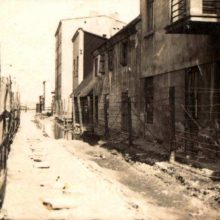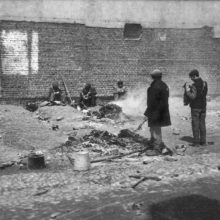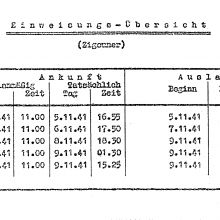The Nazi genocide of the Sinti and Roma
and the long struggle for recognition
and the long struggle for recognition
The Nazi genocide
of the Sinti and Roma and the
long struggle for recognition
of the Sinti and Roma and the
long struggle for recognition
„Racial Diagnosis:Gypsy“
Roma in the Łódź ghetto
In November 1941 around 5,000 Roma mainly from the Austrian federal province of Burgenland were deported to Łódź (Litzmannstadt), where a separate ‘gypsy camp’ was set up within the ‘Jewish ghetto’. Within a matter of weeks more than 700 people fell victim to the atrocious living conditions and the outbreak of a typhus epidemic. In December 1941 and January 1942 the remaining inmates were all taken to the Chełmno extermination camp and asphyxiated in gas vans.

01 | Exterior view of the ‘gypsy’ camp at the Łódź ghetto. There is a handwritten note on the back of the photograph: ‘Double fence and water ditch around the gypsy camp.’ Yad Vashem
01

02 | Exterior view of the buildings that made up the ‘gypsy camp’ at the Łódź ghetto. The ground-floor windows were boarded up to isolate the ‘gypsy camp’ completely from the rest of the ghetto. Frankfurt am Main Jewish Museum; photo: Walter Genewein
02

03 | Photograph of the evacuated ‘gypsy camp’ at the Łódź ghetto once the inmates had been transported to the Chełmno extermination camp. Yad Vashem
03

04 | First page of a telegram from the ‘Reich Main Security Office’ dated 9 October 1941 ‘Re: Transfer of 20,000 Jews and 5,000 gypsies to the Litzmannstadt ghetto’ Yad Vashem
04






